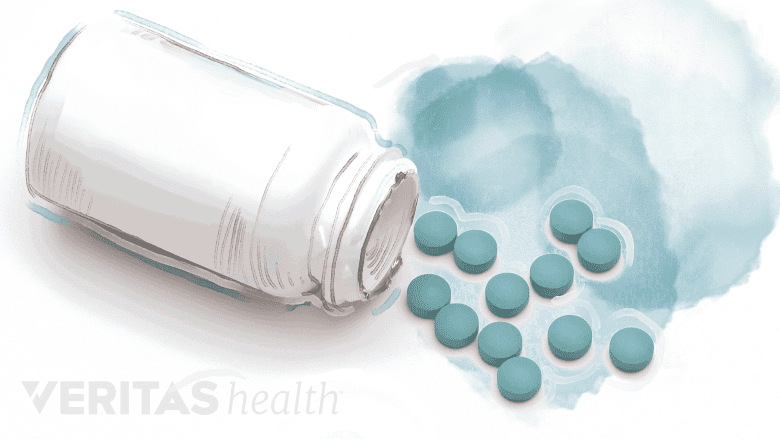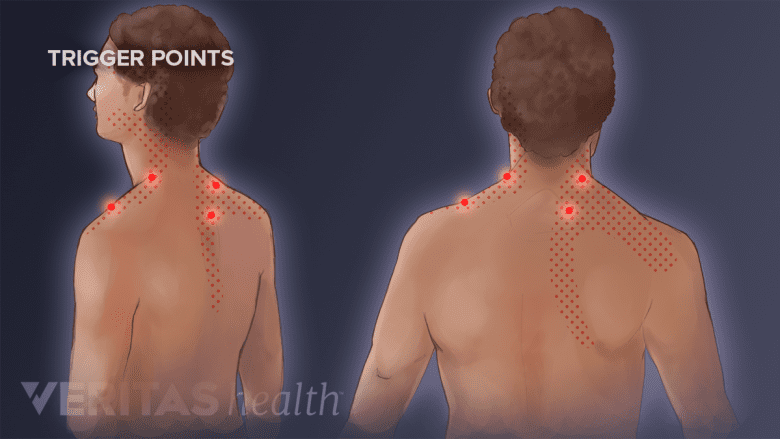Pain from a cervical herniated disc can typically be managed with nonsurgical treatments. Initial treatments may include a short period of rest, pain medications, and physical therapy to improve the neck’s strength, flexibility, and posture.
In This Article:
- Cervical Herniated Disc Symptoms and Treatment Options
- Cervical Herniated Disc Signs and Symptoms
- Cervical Herniated Disc Causes and Diagnosis
- Conservative Treatment for a Cervical Herniated Disc
- Spine Surgery for a Cervical Herniated Disc
- Cervical Herniated Disc Video
Activity Modification

Sleeping on the back may help relieve neck pain in some individuals.
A cervical herniated disc is typically most painful when it first develops or during intermittent flare-ups, such as during activity. If the neck pain is severe and/or radiates down into the arm or hand, a short period of rest and/or activity modification is advised. Some examples may include:
- Refraining from strenuous activities, such as physical labor or playing sports
- Avoiding specific movements that worsen pain, such as turning head to one side
- Modifying sleep positions, such as by changing the pillow and/or sleeping on the back instead of the side or stomach
Watch: Pillows and Positions for Easing Neck Pain Video
Rest tends to help a cervical herniated disc become less painful. As the pain is reduced, activity levels may be increased again.
Medications

OTC medication may provide temporary relief from neck pain.
Nonsteroidal anti-inflammatory drugs (NSAIDs) help to reduce inflammation in the body. Since some of the worst pain caused by a herniated disc comes from inflammation of nerve roots and other tissues. Over-the-counter NSAIDs (Advil, Aleve, Motrin) are commonly the first medications recommended.
If over-the-counter medications do not provide enough pain relief, a doctor can prescribe other pain relievers on a short-term basis. Some examples include prescription-strength NSAIDs, muscle relaxants, or oral steroids. Due to a higher risk for dangerous side effects, prescription pain medications tend to only be used on a short-term basis, such as during particularly bad flare-ups or for a week or two.
Physical Therapy
Strengthening and stretching the neck may help it to become more resistant to pain. Some exercises, such as chin tucks, may also help the head and neck to maintain better posture. Weakened neck muscles are more likely to lead to forward head posture and neck pain. When the head is instead held in neutral alignment with the ears directly above the shoulders, less stress is placed on the cervical spine and its discs.
See Physical Therapy for Neck Pain Relief
A physical therapist or other health professional can design a physical therapy program to meet the patient’s specific needs. For example, some exercises or stretches may need to be modified to reduce pain or target certain muscles. In time, most patients are able to continue neck exercises and stretches at home to maintain neck strength and flexibility over the long term.
See Neck Exercises for Neck Pain
Injections

A cervical epidural steroid injection may provide pain relief by reducing inflammation.
If oral medications and physical therapy do not provide enough pain relief for a cervical herniated disc, therapeutic injections may be considered. Most injections for neck pain are performed using fluoroscopy (x-ray guidance) and contrast dye to visualize the needle’s exact placement in the spine. The goal of an injection for a cervical herniated disc is to place the medication directly where it needs to be without damaging any critical structures within the spine, such as nerve roots, blood vessels, or the spinal cord. Two common injections for cervical herniated discs include:
- Cervical epidural steroid injection. A steroid solution is injected into the epidural space (outer layer of the spinal canal) to reduce inflammation. This injection is by far the most common one used for herniated discs.
- Selective nerve root injection. A steroid solution and anesthetic is injected near the spinal nerve as it exits through the intervertebral foramen. This injection is also used to help diagnose which nerve root might be causing pain.
Many people have reported experiencing at least some pain relief from injections for a cervical herniated disc. Rare but serious complications are possible, so it is advised to check with a doctor about potential benefits and risks.
Other Nonsurgical Treatments

Massage helps loosen tight muscles and relieve trigger-point pain in the neck.
Many other treatments may provide some relief from a cervical herniated disc, such as:
- Ice or heat therapy. Applying ice for 15 or 20 minutes at a time may help reduce inflammation and alleviate pain. Some people may find applying heat for 15 or 20 minutes at a time also offers relief. Whether applying ice or heat, allow 2 hours between applications to reduce the risk for skin damage.
- Cervical traction. A mechanical device is strapped to the head and used to gently lift upward and stretch the cervical spine. The goal is to reduce pressure on the discs and nerve roots. Some people experience pain relief during traction but others do not. If traction provides relief, some patients may opt for a home device to perform the treatment on their own.
- Massage therapy. A gentle massage may provide some relief by helping to loosen muscles, increase blood flow, and promote relaxation. If a massage worsens pain, stop immediately.
Other treatments for cervical herniated disc pain are also available and may provide relief for some people, including transcutaneous electrical nerve stimulation (TENS) therapy, acupuncture, mindful meditation, and others. Some trial and error may be needed before finding the combination of treatments that provide the most relief. If neurological deficits continue to worsen—such as increasing arm numbness or weakness—surgery may be considered.

